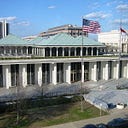Democrats’ Expert Report Shows State Senate Districts Are Not Partisan Outliers
Senator Amy Galey
FOR IMMEDIATE RELEASE
January 4, 2022
Democrats’ Expert Report Shows State Senate Districts Are Not Partisan Outliers
Duke professor Jonathan Mattingly produced 100,000 ‘nonpartisan simulation’ maps
Using 2020 election results, as many as 43% of simulations produce maps MORE favorable to Republicans
Bottom line: Democrats’ own expert report shows expected outcome of State Senate maps are not partisan outliers
Raleigh, N.C. — Democratic organizations are attempting to convince a court to overturn the state senate maps enacted by the General Assembly, arguing the maps excessively favor Republicans. But their own expert’s analysis shows the state senate maps are not outliers and fall well within the range of expected outcomes.
Duke University professor Dr. Jonathan Mattingly says his computer algorithm drew 100,000 “nonpartisan simulations” of potential state senate districts. He compared the expected number of Republicans and Democrats elected in each of those simulated maps to the expected number of Republicans and Democrats elected under the map enacted by the General Assembly.
His results show the expected outcome of state senate elections under the enacted map is not a partisan outlier.
For example, 35,184 (or 35%) of his simulated maps elected more Republicans than the enacted maps when using election results from the 2020 secretary of state race. (Comparisons using other 2020 statewide election results are listed below.)
Bottom line: The claim that the state senate maps result in unfair partisan outcomes is contradicted by the Democrats’ own expert report.
Additional Comparisons
Dr. Mattingly produced expected state senate partisan breakdowns under his simulated maps by overlaying the results from various statewide elections onto his simulated maps.
For example, he produced an expected partisan outcome for the state senate using 2020 governor’s election results by assuming people who voted for a Democratic or Republican governor also voted for a Democratic or Republican state senator, then adding up the districts that would’ve elected a Democrat and the districts that would’ve elected a Republican under that scenario.
Each election below shows how many of Dr. Mattingly’s “nonpartisan simulated” maps would have elected more Republicans than the enacted maps.
Governor 2020 election results
- 16,343 (or 16%) of Dr. Mattingly’s simulated maps elect more Republicans
Secretary of State 2020 election results
- 35,184 (or 35%) of Dr. Mattingly’s simulated maps elect more Republicans
State Auditor 2020 election results
- 42,880 (or 43%) of Dr. Mattingly’s simulated maps elect more Republicans
Attorney General 2020 election results
- 4,332 (or 4%) of Dr. Mattingly’s simulated maps elect more Republicans
Presidential 2020 election results
- 6,220 (or 6%) of Dr. Mattingly’s simulated maps elect more Republicans
Commissioner of Labor 2020 election results
- 5,365 (or 5%) of Dr. Mattingly’s simulated maps elect more Republicans
U.S. Senate 2020 election results
- 14,052 (or 14%) of Dr. Mattingly’s simulated maps elect more Republicans
